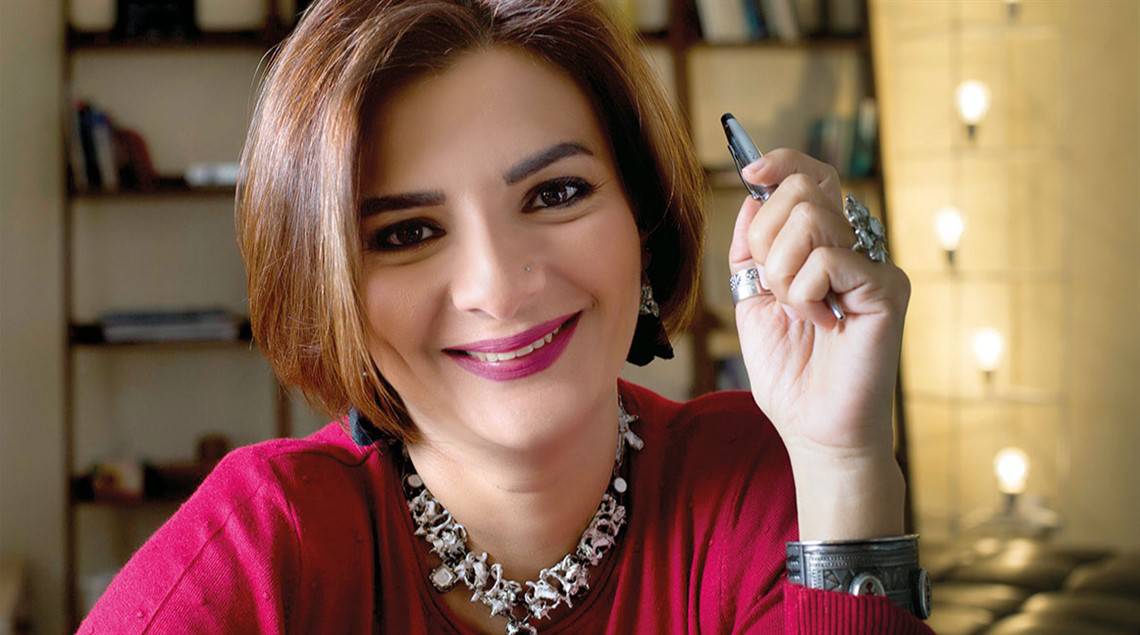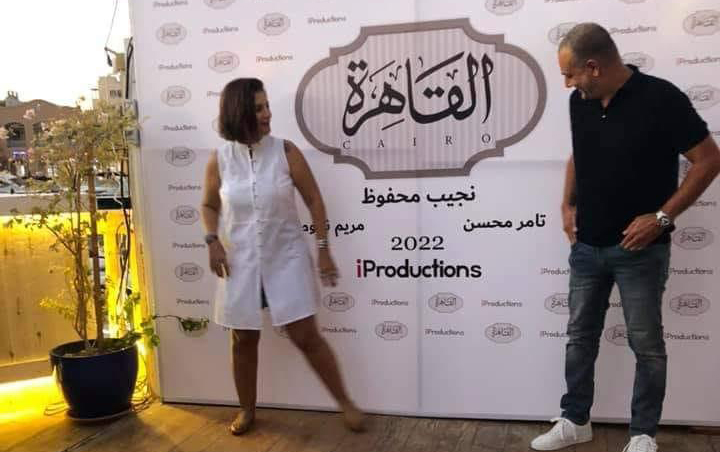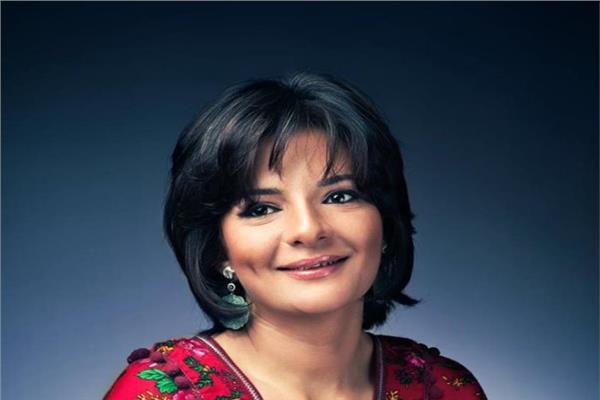‘FEMINIST’ FILMMAKING & RAMADAN SUCCESS: A TALK WITH PIONEERING EGYPTIAN SCREENWRITER MARIAM NAOUM – Scene Arabia
For the past six years, screenwriter Mariam Naoum has gripped mainstream audiences in a way that no other feminist filmmaker has.
It’s hard to remember a time before Egyptian television was what it is today: productive, dynamic, and oversaturated. Last year, for the month of Ramadan – prime season for TV series – more than 30 series made their way to screens across the region. Most, it’s sad to say, were forgettable melodramas or campy comedies, featuring one-dimensional characters and acting that fell just short of believable. But despite the cacophonous flooding of the scene, there are always works that rise above the din. An astounding number of the instant classics that have been added to the canon of exemplary Arab drama over the past few years have been written by the same woman: Mariam Naoum.
I have a drive to represent the oppressed. And because the woman still occupies a marginal space in society, because hers is the epitome of oppression, she’s featured again and again in my work.
Starting 2013 – four years after her first film, Wahed Sefr (One-Nil) was released – every Ramadan was characterised by her latest work – most notably in collaboration with director Kamla Abu Zikry, Director of Photography Nancy Abdelfattah, and starring Nelly Karim – rising as a fan-favourite. Her 2013 series, Moga Hara (Heat Wave) and A Girl Named Zat were followed by Segn El Nisaa (The Women’s Prison) in 2014 – a scathing exploration of the Egyptian prison system and the socioeconomic cycles that lead women to its grasp, widely considered the work that cemented Naoum’s place in the canon. In the following years, she would tackle drug addiction in Taht El Saytara (Under Control) and mental illness in Seqout Horr (Freefall), as well as a host of historical and political dynamics in Wahet El Gheroub (Sunset Oasis) and Abu Omar El Masry.
 Ruby, Dorra Zarouk, and Nelly Karim in Segn El Nisaa.
Ruby, Dorra Zarouk, and Nelly Karim in Segn El Nisaa.
Though her repertoire speaks for itself, it raises an important question: how could female driven works, with a female screenwriter, director, star, and director of photography, achieve such a level of success that Egyptian society – patriarchal as it is – waits for the newest iteration every year? Specifically when the industry, for decades, has held that social dramas that deal with the grit of women’s issues are relegated – if not to the independent film festival circuit – then to only niche levels of success? Her characters, flawed women with plotlines that do not depend on a Don Juan-type male lead, are unique in mainstream television. “I wanted to write what I believe in,” says Naoum. “That a female character could be independent, autonomous, a full self that’s as complex as she is real. And I found people whose purposes aligned, and production possibilities that could make our goals a reality.”
I can’t just sit in a room and imagine how a drug dealer like Aziza acts, or a drug addict’s attitude, or a prostitute’s experience. I need to actually find people similar to the ones I’m writing and listen to them.
The mainstreaming of feminist storylines, where even an epic about drug addiction like Taht El Saytara is told through the eyes of a bare-faced, non-sexualised Nelly Karim falling outside the conventional male gaze, has never before been achieved in the region. This is not to say, of course, that works of the same kind weren’t produced, but they never managed to achieve the same degree of popularity. This kind of feminist filmmaking – works that don’t merely have female leads, but delve into the intersections of class, politics, and cultural legacies that perpetuate systemic violence against women – doesn’t show up all that often on mainstream screens. Filmmakers like Lebanese Nadine Labaki, Palestinian Annemarie Jacir, and Egyptian Hala Khalil’s incredible works have mostly occupied the space of independent films, achieving their success mainly in international film festivals. Even Yousry Nasrallah’s 2009 Ehky Ya Schehrezade (Schehrezade, Tell Me A Story), a collage of stories of women’s issues – and whose hyperrealism and heavy-handedness bears the closest resemblance to Naoum’s work – was considered a commercial flop, despite a star-studded cast lead by Mona Zaki and a screenplay by veteran writer Wahid Hamid.
 Rehab El Gamal, Nesreen Amin, and Nahed El-Sebaey in Ehky Ya Schehrezade, where they played three sisters whose economic and social circumstances led to them falling prey to Saeed El Khafeef (Mohamed Ramadan), who secretly married all of them.
Rehab El Gamal, Nesreen Amin, and Nahed El-Sebaey in Ehky Ya Schehrezade, where they played three sisters whose economic and social circumstances led to them falling prey to Saeed El Khafeef (Mohamed Ramadan), who secretly married all of them.
Of course, Naoum’s success should be contextualised in the history of mainstream TV and cinema. The work of women such as actress Faten Hamama, director Inas El-Degheidy, and screenwriter Hosn Shah have paved the way before her. But a comparative look at the film perhaps most often touted as a feminist victory, Henry Barakat’s 1963 classic El Bab El Maftouh (The Open Door) starring Faten Hamama, illuminates how Naoum’s work is fundamentally different from what came before. The film adaptation of Latifa El-Zayyat’s 1960 novel changes the ending in a telling way. Where the novel ends with the protagonist Laila’s solo travel to Port Said to join the resistance in 1956, the film has to end with her love interest, Hussein (Salah Selim), instigating her liberation. It has to be him pulling her onto the train. Even a story explicitly about a young woman’s liberation must be made palatable to patriarchal society. The woman, even in her own story, is only ever considered in relation to the man.
We assume what audiences will respond to, what they’ll accept and what they won’t. And that comes from a patronising, almost-paternalistic view of the relationship between filmmaker and audience. In reality, people will watch anything if it’s honest.
Through decades of industry and national upheaval, this phenomenon has remained unchanged in the portrayals of women. Mainstream audiences were thought to be staunchly opposed to the kinds of stories that Naoum would write. But she has achieved her success with work that is at all times female-driven and fundamentally feminist, whether she’s telling the story of the middle class personified in a single woman in Zat, the plight of disadvantaged women in Segn El Nisaa, or the complexities of mental illness in Seqout Horr. “We assume what audiences will respond to, what they’ll accept and what they won’t,” says Naoum. “And that comes from a patronising, almost-paternalistic view of the relationship between filmmaker and audience. In reality, people will watch anything if it’s honest.”
 Faten Hamama and Saleh Selim in El Bab El Maftouh.
Faten Hamama and Saleh Selim in El Bab El Maftouh.
Though she has described herself as a feminist screenwriter, Naoum’s focus is first and foremost the social dimension of her work. Her purpose, above all, is to hold a mirror up to society, warts and all. “At some point, I might write something purely for entertainment value. But there has always been a social dimension to my work, because I’m personally burdened by what’s happening in society. I can’t separate myself from the world – that I’m a citizen or a writer. I’m always both. So I have a drive to represent the oppressed. And because the woman still occupies a marginal space in society, because hers is the epitome of oppression, she’s featured again and again in my work.”

Naoum’s characters also share no resemblance with the women who populate mainstream cinema and TV shows who, even at a cursory glance, never land as real ‘selves’. Most are not believable, not necessarily because of the actress portraying her, but because the writer has written an unrealistic, one-dimensional mold of a woman. The seductress waltzing into the businessman’s office. The wise, old, Virgin Mary-type mother. The maligned and mistreated first wife. At best, the hooker with a heart of gold. They’re phantoms or fantasies, imaginings of a woman’s needs, desires, and experiences, sometimes to ludicrous effect.
Between the drug addict, the family, and society, there’s a cycle of denial that takes hold. So do we just surrender to it, bury our heads in the sand? Or do we choose to start these difficult conversations?
“It’s obvious when someone’s writing and there’s no actual experience there,” says Naoum. “Only things they’ve watched or read. And the cycle goes on, only ever reproducing an archetype of a woman…A mother has to be the archetypal Ideal Mother that wins the [government-sponsored Mother’s Day] competition every year. And if she fails that idea, her motherhood is lacking.”
 Salwa El Khattab’s Aziza in Segn El Nisaa, whose comedic mannerisms, which led to a thousand memes, rounded out one of the series’ most complex characters.
Salwa El Khattab’s Aziza in Segn El Nisaa, whose comedic mannerisms, which led to a thousand memes, rounded out one of the series’ most complex characters.
By contrast, Naoum revels in the difficulty of writing truly complex, real characters. With audiences accustomed to certain predictable trajectories for the character molds they’re familiar with – the whore dies (or is somehow punished), the girl-next-door finally gets the guy, the corrupt businessman gets his comeuppance – it requires a deft hand to accomplish. A prime example of this is Salwa Khattab’s hilarious-and-notorious character Aziza in Segn El Nisaa. A drug dealer and practically a gang leader in prison, she at some point – in one of the most shocking scenes in modern Egyptian history – assaults the woman who ‘stole’ her husband (who had effectively been one of her adopted daughters) with red pepper on her vagina. However, up until that point, the character had been set up as loyal to a fault, powerful, supporting those around her at all costs. “She’s a human with both sides,” Naoum explains. “What brings out the demon in her is a particular pressure point. Otherwise, she’s just a person in grey. That black and white doesn’t exist in real life.”
A drug dealer and practically a gang leader in prison, she at some point – in one of the most shocking scenes in modern Egyptian history – assaults the woman who ‘stole’ her husband (who had effectively been one of her adopted daughters) with red pepper on her vagina.
Perhaps the most difficult aspect of a screenwriter’s job is how to actually capture the voices of and realities of the characters she writes. “I can’t just sit in a room and imagine how a drug dealer like Aziza acts, or a drug addict’s attitude, or a prostitute’s experience. I need to actually find people similar to the ones I’m writing and listen to them.” In preparation for Segn El Nisaa, for example, Naoum and Abu Zikry coordinated with authorities for regular visits to the women’s prison in El Qanater El Khayreya, where – though they weren’t allowed recorders, cameras, or even notebooks – they spent time listening to prisoners and guards. These conversations would in fact yield some of the plot lines and character details for the series.
 Salwa Osman and Nelly Karim in Segn El Nisaa.
Salwa Osman and Nelly Karim in Segn El Nisaa.
Even further than real characters – in collaboration with the directors, directors of photography, and actors – Naoum’s work has become known for its staunch hyperrealism that, though popularised by giants such as director Khaled Youssef, have usually had a voyeuristic element to them, what we’ve come to call ‘poverty porn’. In Youssef’s 2008 powerful social drama, Dokkan Shehata (Shehata’s Shop), for example, there’s an element of spectacle to the social tragedy; it’s put on display for the viewer, set to melodramatic music for a cheap emotional release. The poverty in Segn El Nisaa is never portrayed in the same light. The inhabitants of the neighbourhood where much of the action takes place – Ezbet El Segn in El Qanater El Khayreya – with the aesthetics and living conditions of an informal settlement, are never robbed of their agency in the same way they often are in mainstream representations of poverty. They are what they are, not what the privileged urban classes of Cairo think they should be.
Her trademark hyperrealism has also held true for the topics Naoum has chosen to tackle in each series. Her work has portrayed, to varying degrees, class conflict, domestic violence, drug addiction, mental illness, female genital mutilation, sexual orientation, and gender identity – everything, in short, that is still taboo in Egyptian society. “The fact that society doesn’t want to see or face certain issues, that’s only ever our denial instinct. Because the issues are out there. And maybe it’s not that we don’t want to see it, but that we’re not quite ready yet. Sometimes all we need is a push for someone to break that barrier, open that dialogue on a large social scale.”
 Hana Shiha’s role as Nousa in Moga Hara explored, in part, a lesbian relationship.
Hana Shiha’s role as Nousa in Moga Hara explored, in part, a lesbian relationship.
As a result, almost every series Naoum has written has been rife with controversy, perhaps none more than 2015’s Taht El Saytara, directed by Tamer Mohsen, an epic about drug addiction that follows Nelly Karim’s Mariam, an ex-heroin addict struggling with her recovery. In an interview with reporter Eman El-Hossary, Naoum describes her process of writing what had never been faithfully represented in Arab television before. In the five years of preparation that it took Naoum and Mohsen to produce the series, both spent time with drug addicts (some recovering, some not), in private and public hospitals, and in halfway houses to capture the realities and intricacies of drug addiction.
You had these upper-class women who were suddenly terrified of their domestic workers, and blaming it on us.
The ensemble cast features characters in different stages of addiction and recovery, including the controversial relationship between Hania and Ali – the #RelationshipGoals that went from flirting in a pool, to teenage pregnancy and drug addiction, to Ali letting a drug dealer rape Hania in exchange for heroin. When the episodes first started airing, the show received negative responses from people who called the creators irresponsible for romanticising drugs and that kind of relationship. Gradually, the hate turned to acclaim. The goal, Naoum reflects, was not to promote, but to faithfully reflect, drug addiction and its social dimensions. To spread a critical awareness on what is still very much taboo. “Between the drug addict, the family, and society, there’s a cycle of denial that takes hold. So do we just surrender to it, bury our heads in the sand? Or do we choose to start these difficult conversations?”
 The relationship between Aly (Mohamed Farag) and Hania (Jamila Awad) proved polarising on social media, between those who idealised their relationship and those who attacked it.
The relationship between Aly (Mohamed Farag) and Hania (Jamila Awad) proved polarising on social media, between those who idealised their relationship and those who attacked it.
A similar controversy had surfaced two years earlier during Segn El Nisaa, for the show’s portrayal of Reda, played by Ruby, a young woman from rural Egypt who is mistreated as a domestic worker in Cairo, and is executed for setting fire to her employer’s daughter. “You had these upper-class women who were suddenly terrified of their domestic workers, and blaming it on us. But that wasn’t the point,” reflects Naoum. Instead, she clarifies, the point was to critique the very system of domestic work in Egypt that forces young, uneducated women out of their rural communities into the unfamiliar, oppressive spaces of Cairo – where all they know is the cramped spaces of servants’ quarters in the homes of the social elite.
The fact that society doesn’t want to see or face certain issues, that’s only ever our denial instinct. Because the issues are out there.
There’s a tension that’s common in Arab society, between a guilty-pleasure-type revelry in the scandal, and the collective denial of social ills. Between wanting to see it and rejecting it. According to Naoum, what we focus on most often is the scandal of the result, without looking into what this so-called scandal is actually a symptom of. Talk shows, for example, endlessly grasp onto headlines of crimes and stories of social deviance, but never address the systemic violence from which these headlines erupt. Naoum, by contrast, writes characters that delve into the roots that allow a particular phenomenon to exist and persist. Hania and Aly are the story of how love and life can lose way to the cycle of addiction. Reda’s crime is a symptom of a deeply flawed social contract.
 Nelly Karim in Seqout Horr.
Nelly Karim in Seqout Horr.
Year after year, Naoum has, in most of her annual contributions to the Ramadan roster, succeeded in a balancing act of drawing a previously unfalteringly conservative audience to radical, intersectionally feminist portrayals of women, poverty, and the different pandemics of society. Every year, in the months leading up to Ramadan, the question starts floating around in the ether, what configuration of the Naoum-Abu Zikry-Karim-Abdel Fattah constellation will be working together. This Ramadan, Naoum and Abu Zikry are joining forces again for the thriller series Zay El Shams (Clear as Day) starring Dina El Sherbiny, Ahmed Malek, Sawsan Badr, Riham Abdel Ghafour, and Ahmed El Saadany.
Source:
scenearabia.com






